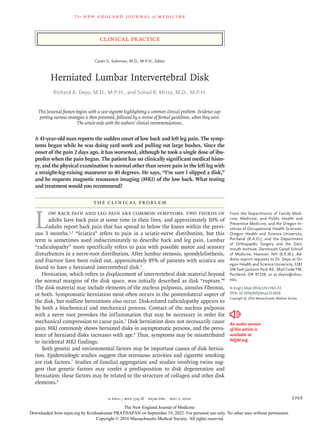1) A 41-year-old man reports sudden onset of low back and left leg pain after yard work, which has worsened over 2 days. Physical exam finds severe left leg pain with straight-leg raise to 40 degrees.
2) Herniated lumbar disks are a common cause of sciatica. The natural history is generally favorable, with most patients finding relief within 3 months with conservative treatment like analgesics.
3) For patients with persistent sciatica over 4-6 weeks, MRI can confirm disk herniation and help determine if more aggressive treatment is needed. Conservative care is generally recommended for 6 weeks before considering injections or surgery.









